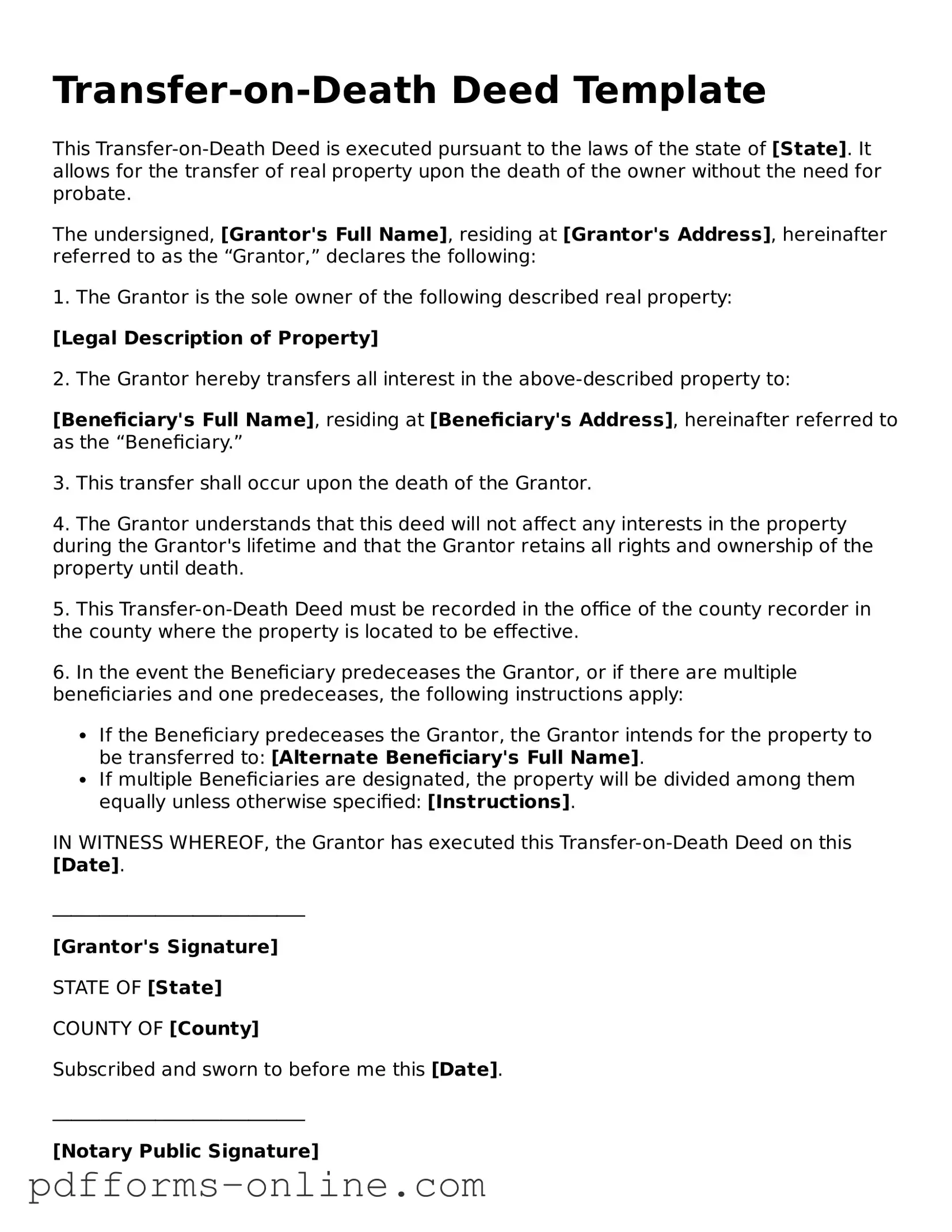Transfer-on-Death Deed Template
This Transfer-on-Death Deed is executed pursuant to the laws of the state of [State]. It allows for the transfer of real property upon the death of the owner without the need for probate.
The undersigned, [Grantor's Full Name], residing at [Grantor's Address], hereinafter referred to as the “Grantor,” declares the following:
1. The Grantor is the sole owner of the following described real property:
[Legal Description of Property]
2. The Grantor hereby transfers all interest in the above-described property to:
[Beneficiary's Full Name], residing at [Beneficiary's Address], hereinafter referred to as the “Beneficiary.”
3. This transfer shall occur upon the death of the Grantor.
4. The Grantor understands that this deed will not affect any interests in the property during the Grantor's lifetime and that the Grantor retains all rights and ownership of the property until death.
5. This Transfer-on-Death Deed must be recorded in the office of the county recorder in the county where the property is located to be effective.
6. In the event the Beneficiary predeceases the Grantor, or if there are multiple beneficiaries and one predeceases, the following instructions apply:
- If the Beneficiary predeceases the Grantor, the Grantor intends for the property to be transferred to: [Alternate Beneficiary's Full Name].
- If multiple Beneficiaries are designated, the property will be divided among them equally unless otherwise specified: [Instructions].
IN WITNESS WHEREOF, the Grantor has executed this Transfer-on-Death Deed on this [Date].
___________________________
[Grantor's Signature]
STATE OF [State]
COUNTY OF [County]
Subscribed and sworn to before me this [Date].
___________________________
[Notary Public Signature]
[Notary Public Name]
My commission expires: [Date]
